Chief Officer Wilde - Evacuation
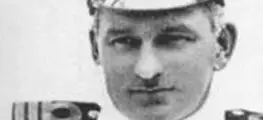
Chief Officer Wilde - was awake and active
before most of the other officers.
At about midnight, Fourth Officer Boxhall was tasked with waking the off-duty officers: Lightoller, Pitman and Lowe, likely in that order. All of the officers except for Lowe responded to Boxhall's call. Although it is most likely that Wilde was already awake and on the bridge by the time Boxhall woke the other officers. The reason for this assumption is because when Ligtholler came out of the officer's quarters after midnight he met Wilde, already engaged in the uncovering of the lifeboats:
"I met the Chief Officer almost immediately after, coming out of the door of the quarters. First of all the Chief Officer told me to commence to get the covers off the boats. I asked him then if all hands had been called, and he said, 'Yes.'" (British Inquiry)
Prior to the uncovering of the lifeboats Wilde, as seen below, was involved in a forecastle inspection, which means that he was awake and working prior to the other officers wake up call. His watch did not begin until 2am and yet he was up and dressed before midnight. He likely had been disturbed by the collision or subsequent noise. Or possibly Smith had woken him specifically to help deal with the situation.
Author Geoffrey Marcus, in his book "The Maiden Voyage" on page 131 dscribes Wilde meeting Captain Smith when he hurried to the bridge. The only source of this information - which is unreferenced - could be Fourth Officer Boxhall in his later years, who Marcus contacted just prior to the last surviving officer's death.
The Chief Officer then hurried to the bridge and asked the Captain whether he thought the damage was serious. 'Certaintly,' was the reply. I'm afraid it's more than serious.' During this time Captain Smith had been to the wheel-house to look at the commutator, which was a small instrument mounted in front of the compass for indicating how the ship was listing. He observed to his consternation that it already showed a list of five degrees to starboard. 'Oh, my God!' he muttered in his beard.
Wilde is frequently referred to in various articles and publications as being an 'enigma' as he was seemingly 'inactive' and little is known about his activities during the evacuation and sinking of the Titanic. This is incorrect. There is enough evidence to know that he certainly was not "inactive" during the evacuation, even if other officer's vigorous activities may have eclipsed his own.
But it must be acknowledged that the officer reshuffle, in which William Murdoch was demoted the day before sailing from Chief Officer to First Officer, had resulted in considerable confusion, with many accounts and testimony referring to the "Chief Officer" during the evacuation when almost undoubtedly it is describing First Officer William Murdoch. Such accounts which obviously are Murdoch, or those that are too ambiguous, have been excluded from the following sequence of events.
Confirmed sightings:
|
Approximate time |
Chief Officer Wilde's Activities |
|
11:50pm |
Forecastle inspection |
|
12:10am |
Uncovering the lifeboats |
|
12:20am |
Begins loading the Lifeboats |
|
1:00am |
Lifeboat no.8 |
|
1:10 am |
Port list rebalancing |
|
1:15am |
Guns issued |
|
1:25am |
Lifeboat 14 |
|
1:30am |
Lifeboats no.12 & 16 |
|
1:45am |
Lifeboat no.2 |
|
1:50am |
Lifeboat no.10 |
|
2:00am |
Collapsible C & Ismay |
|
2:05am |
Collapsible D |
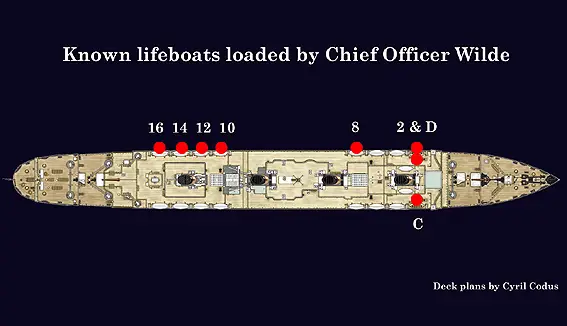
11:50pm Forecastle Inspection
Soon after the collision there was a loud hissing noise coming from the forecastle head, and Chief Officer Wilde went to investigate. His appearance there was known by Lightoller and witnessed by two of the crew.
Lightoller testified to the lamp-trimmer and storekeeper investigating the forward area "and the chief officer was there, and they heard a whistling sound. On locating this, they found it was the exhaust pipe from the forepeak tank; that is, the tank down in the bottom of the ship. They put their hands over this pipe and found the air was rushing out, proving that water was entering the fore peak. " (US Inquiry)
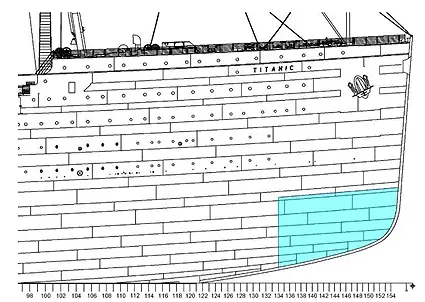
The forepeak tank was a water tank located just above the stem bar at the lowest and most forward part of the ship. (Image: Bob Read, D.M.D.)
Corroborating this, 43-year-old Lamp trimmer Samuel Hemming went to investigate "where the hissing noise came from" and "found it was the air escaping out of the exhaust of the tank. At that time the chief officer, Mr. Wilde, put his head around the hawse pipe and says: "What is that, Hemming?" I said: "The air is escaping from the forepeak tank. She is making water in the forepeak tank, but the storeroom is quite dry." He said, "All right," and went away." (US Inquiry)
At the British Inquiry, Hemming said the Chief Officer "asked me what it was. I said: “It is the air coming out of the four-feet tank. She must be making water there.”… He said: “All right.” I said; “The store rooms are dry though.” He said; “All right,” and went away." (British Inquiry). Surprisingly, Hemming then went back to his bunk to sleep. (US Inquiry)
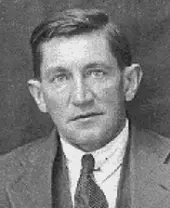
31-year-old Boatswain Mate
Albert Haines stated that
"Mr. Wilde, chief officer, was
working with us."
31-year-old Boatswain Mate Albert Haines stated that "Mr. Wilde, chief officer, was working with us" in particular soon after the collision: "When I first heard the blow, I heard some air escaping right forward, and I ran forward to the exhaust from the fore-peak tank. I said the forepeak tank was filling and the air was coming out and the water was coming in. It was an overflow pipe… Just as I got there the chief officer, Mr. Wilde, had gotten there, and the lamp trimmer was there, Mr. Hemming… We said the forepeak tank was filling; the air was coming out and the water was coming in. He [Wilde] asked if there was any water in the forepeak, and the store-keeper went into the forepeak, and there was no water there, sir. That is the forepeak, sir; not the forepeak tank. The forepeak tank was full. The chief officer then went on the bridge to report." Haines then went on to "look at No.1 hole" and saw "the tarpaulin was bellying up, raising, showing that the water was coming in… I went on the bridge and reported to the chief officer… I told him No. 1 hole was filling. He gave me an order then to get the men up and get the boats out." (US Inquiry)
12:10am Uncover the boats
As previously mentioned, Lightoller remembered encountering Wilde "immediately after, coming out of the door of the quarters" which could suggest that Wilde was awake and active well in advance of Boxhall's wake up call. Wilde ordered Lightoller to uncover the lifeboats:
"I met the Chief Officer almost immediately after, coming out of the door of the quarters. First of all the Chief Officer told me to commence to get the covers off the boats. I asked him then if all hands had been called, and he said, “Yes.”" (British Inquiry)
Quartermaster Olliver remembered that after the collision Wilde instructed him to go to the bosun and pass on his orders to ‘get the oar lines and to uncover the boats and get them ready for lowering’.
"As soon as I delivered that message the chief officer sent me to the boatswain of the ship and told me to tell the boatswain to get the oar lines and to uncover the boats and get them ready for lowering, and I done so, and came back on the bridge." (US Inquiry)
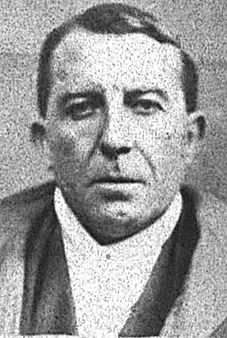
Able Seaman Joseph Scarrott described
Wilde assigning men to their 'own boats'.
Able Seaman Joseph Scarrott describes the uncovering process, with Wilde assigning men to their 'own boats'. "Acting on the boatswain’s orders." Scarrott says:
"The first boat on the port side - not the emergency boat. The first boat was the first boat to uncover. You understand we started on the port side and got those boats uncovered and cleared and turned them out, falls all ready for lowering, and then worked with the starboard boats. At the time we were working at the starboard boat - I think I was at boat 13 - the chief officer came along and asked me whether it was my right boat. I said, “No, we are all assisting here.” He said, “All right, go to your own boat,” and then I went to No. 14 boat… -I think I assisted in getting four out ready for lowering, but not down to the water. I was at my own station then. By the time the order was passed for women and children first, by Mr. Wilde, I assisted to get them all out ready for lowering. I personally helped at four boats." (British Inquiry)
Fourth Officer Boxhall noted that there were no lamps in the lifeboats:
"It was through my speaking to the Chief Officer about it. I mentioned to him that there were no lamps. That was earlier on, when they started to clear the boats. I mentioned to him the fact that there were no lamps in any of the boats, or compasses, and he told me to get hold of the lamp trimmer. The Chief Officer told me to find the lamp trimmer. I did find him after a little trouble. I really forget where I found him. (British Inquiry)
12:20am Loading the Boats
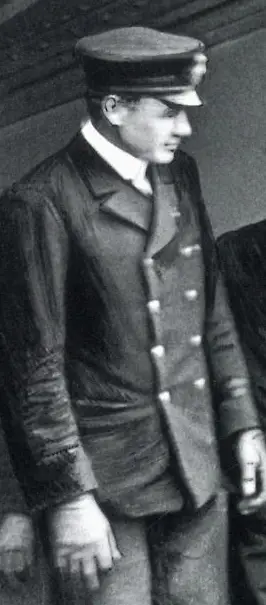
Second Officer Lightoller was under
the impression that Mr. Wilde said
“No,” to the lifeboats being swung out.
Once the lifeboats were uncovered and ready for loading, Lightoller approached Chief Officer Wilde and asked about 'swinging out' the boats in preparation for loading passengers.
"About the time I had finished seeing the men distributed round the deck, and the boat covers well under way and everything going smoothly, I then enquired of the Chief Officer whether we should carry on and swing out… I am under the impression that Mr. Wilde said “No,” or “Wait,” something to that effect, and meeting the Commander, I asked him, and he said, “Yes, swing out.” (British Inquiry)
Wilde's apparent reluctance included the loading of passengers, as Lightoller described the same moment with some further details:
"After I had swung out No. 4 boat I asked the Chief Officer should we put the women and children in, and he said "No." I left the men to go ahead with their work and found the Commander, or I met him and I asked him should we put the women and children in, and the Commander said "Yes, put the women and children in and lower away." That was the last order I received on the ship." (British Inquiry)
Was Wilde's reluctance part of some 'paralysis' as has been unfairly leveled at Captain Smith?:
Several writers have suggested that Wilde’s movements during the evacuation are mysterious, even going so far as to suggest that this indicates a paralysis on his part. Lightoller’s recollection that he had to go over Wilde’s head to get Smith’s authorisation to begin loading women and children into the boats is often cited as evidence that Wilde was not proactive enough in dealing with the unfolding disaster. This impression is countered by the testimony of other survivors, many of whom recalled the active part he played in the evacuation. ("On Watch" - Nautical-papers.com, 2002 by Jemma Hyder and Inger Sheil)
Despite the seeming reluctance on Wilde's part in regard to this order, Lightoller also acknowledges that Wilde had overall responsibility, saying: "I was on the port side, and Mr. Murdoch was on the starboard side, and the chief officer was superintending generally, and lowered one or two boats himself." (US Inquiry)
The following includes some of the lifeboats Wilde was directly involved with loading and lowering.
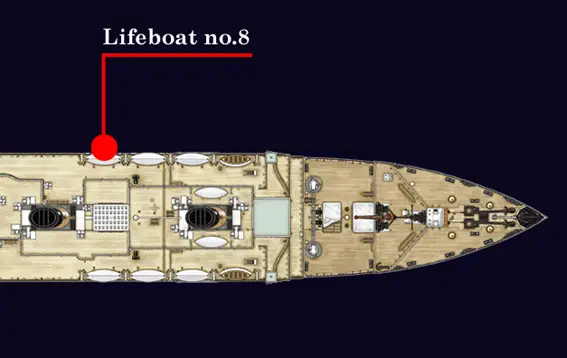
1am Lifeboat no.8
When Lightoller was asked to provide evidence about lifeboat no.8, he revealed that Wilde 'took charge' while he was working on lifeboat no.4:
" I think, if I remember rightly, at No. 8 I left the lowering to the chief. He came along and, of course, being Senior Officer, took charge, and so I went then, I think, to No. 4 to complete the launching of No. 4… If it was No. 8 that the Chief Officer came to, I left it to him. I am afraid I cannot say with any degree of accuracy. If I was there I would decide who was to go in, and if he was there superintending he would naturally. I think it was No. 8 the Chief came to." (British Inquiry)

Bedroom Steward Alfred Crawford
testified that Wilde said there was
'quite enough in that boat to be
safe to lower it.' (Image:
Encyclopedia Titanica)
We have independent testimony that supports Wilde working at no.8. Bedroom Steward Alfred Crawford testified at the US Inquiry:
"After I heard they were lowering away the port boats, I went around to my proper station… Which was No. 8. Mr. Wilde, the chief officer, was there. We filled that boat up with women first. Mrs. Isidor Straus and her husband were there, and she made an attempt to get into the boat first. She had placed her maid in the boat previous to that. She handed her maid a rug, and she stepped back and clung to her husband and said "We have been together all these years. Where you go I go." After that Capt. Smith came to the boat and asked how many men were in the boat. There were two sailors. He told me to get into the boat." (US Inquiry)
Further in his testimony Crawford confirmed that at lifeboat no.8 "the chief officer superintended it, and myself" while it was lowered by Captain Smith (US Inquiry).
At the British Inquiry Crawford was questioned as to why no.8 was lowered with "only 35 passengers" to which he replied "The only thing is that Mr. Wilde, the Chief Officer, said there were quite enough in that boat to be safe to lower it" apparently in reference to the strength of the falls -"he said there was quite enough in it to lower from the davits." When lifeboat no.8 was being lowered "there were a few... 20 or 30 probably" passengers on the boat deck and "Mr. Wilde told them to go along to No. 10 and get into that." (British Inquiry)
Famously, the Strauses refused entry into lifeboat no.8, although Ida insisted her newly hired English maid, Ellen Bird entered. They did not follow Wilde's advice to go to lifeboat no.10. However, the other ladies that had gathered there did. According to Crawford "the Chief Officer told them to go along to No. 10 boat and get in there." (British Inquiry)
1:10 am Port List Rebalancing
According to Tim Maltin "Titanic carried a permanent, but slight, list to port on her maiden voyage, caused by the loading of the ship. " (Tim Maltin, 101 Things You Thought You Knew About The Titanic... But Didn’t!,). Immediately after the collision there was a list to starboard but as water continued to pour into the hull her permanant list was restored. Chief Officer Wilde noticed this and gave an order that was witnessed by several people.
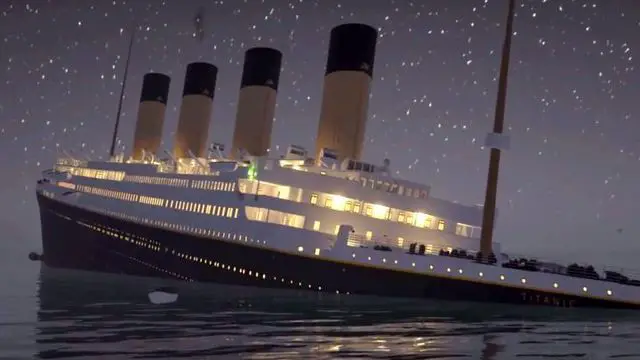
Titanic's port list as visualised in the Honor & Glory video game animation.
Colonel Archibald Gracie recalled in his 1912 account, The Truth about the Titanic: "When we were loading the last boat, just a short time before it was fully loaded, a palpable list toward the port side began, and the officer called out, “All passengers to the starboard side,” and Smith [his friend Clinch- Smith] and myself went to the starboard side, still at the bow of the ship.’"
At the Senate Inquiry, Lightoller was asked about whether the passengers were "instructed at any time to go to one side or the other of the ship?" To which he replied:
"When the ship was taking a heavy list - not a heavy list - but she was taking a list over to port, the order was called, I think, by the chief officer. "Everyone on the starboard side to straighten her up," which I repeated." (US Inquiry)
At The British Inquiry, Lightoller was asked about a list to starboard after the collision and he replied that he was not aware of one. But he does remember Wilde's order:
"I may say that my notice was called to this list - I perhaps might not have noticed it; it was not very great - by Mr. Wilde calling out “All passengers over to the starboard side.” That was an endeavour to give her a righting movement, and it was then I noticed that the ship had a list. It would have been far more noticeable on the starboard side than on the port. (British Inquiry)
Unlike Gracie, Lightoller places the timing of this order "half an hour or three quarters of an hour" before he left the ship (US Inquiry) or 'while he was dealing with lifeboat no.6 ' (British Inquiry). Lifeboat 6 was lowered at approximately 1.10am.
The shift of passengers to the starboard side does tally with the lifeboat numbers launched after 1am which increase from 12 occupants of no.1 at 1:05am, to 40 occupants in no.9 at 1.30am. All further boats departing from the starboard side are reasonably full.
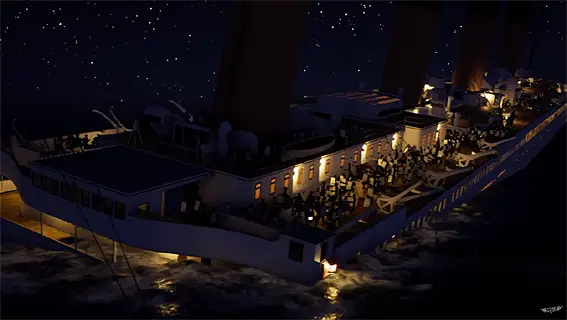
Titanic's port list as visualised in the Honor & Glory video game animation.
According to Tim Maltin, there is some logic to Wilde's order, however it would be of little effect:
It may seem that the order to move men around Titanic in an attempt to keep her on an even keel was an odd one, given the ship’s great weight. However, because Titanic was now lying on her rounded bilge keel, and not the much flatter central keel on which she was designed to float, the shape of her hull made her ‘tender’, and thus it was possible to affect the list to some extent by moving people around. The number of people required to make a significant difference, however, was more than were available; one of the Titanic designers, Edward Wilding, estimated that moving 800 people 50 feet would only have corrected the list by about 2 degrees—not much when the ship was listing by as much as 10 degrees. (Tim Maltin, 101 Things You Thought You Knew About The Titanic... But Didn’t!,).
1.15am Guns issued
Chief Officer Wilde was the one who asked for the firearms - according to Second Officer Lightoller's account:
Guns handed out to officers in Murdoch's cabin as 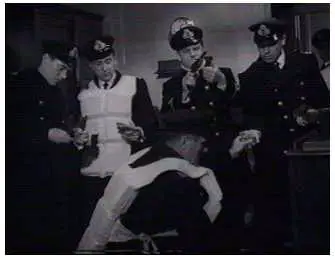
portrayed in the film "A Night to Remember" (1958)
It was about this time that the Chief Officer came over from the starboard side and asked, did I know where the firearms were?
As I pointed out before, it was the First Officer’s responsibility to receive firearms, navigation instruments, and so forth. I have also said firearms on merchant ships are looked on as ornamental more than useful, and as First Officer I had simply hove the lot into a locker, in my original cabin, a locker that was of little use owing to its inaccessibility.
Then, later on, had come the “general post,” whereby Murdoch who was now First Officer, knew nothing about the firearms, and couldn’t find them when they were wanted—I say wanted, rather than needed, because I still don’t believe they were actually needed.
I told the Chief Officer, “Yes, I know where they are. Come along and I’ll get them for you,” and into the First Officer’s cabin we went—the Chief, Murdoch, the Captain and myself—where I hauled them out, still in all their pristine newness and grease.
I was going out when the Chief shoved one of the revolvers into my hands, with a handful of ammunition, and said, “Here you are, you may need it.” On the impulse, I just slipped it into my pocket, along with the cartridges, and returned to the boats. The whole incident had not taken more than three minutes, though it seemed barely worth that precious time. (Charles Lightoller, Titanic and Other Ships, 1935)
Hoyt: Wilde using his revolver
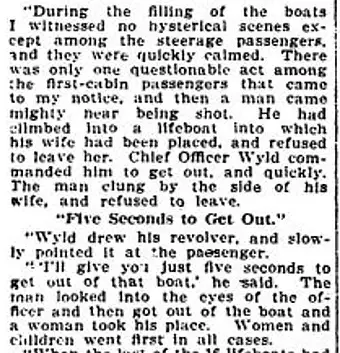
Wilde is described as using his revolver to remove a passenger from a lifeboat in the Springfield Union, Saturday 20th April 1912
There is a specific reference to Wilde using his gun at some point after having received it. According to first class passenger Mr Frederick Hoyt, Wilde used his gun to remove a male passenger who refused to leave his wife in a lifeboat. Wilde allegedly pointed his revovlver at the passenger and said "I’ll give you just five seconds to get out of that boat" and the man finally complied. Exactly where this occured is not said. Hoyt escaped aboard collapsible D, which Wilde loaded, so that is a possibility:
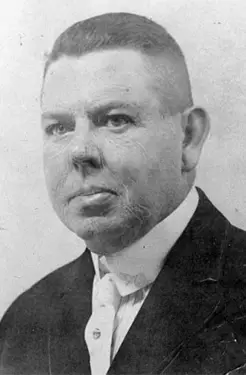
Frederick Hoyt described Wilde pointing
his revolver at a man and giving him
"five seconds" to get out of a lifeboat.
Man Climbed into Boat
“During the filling of the boats I witnessed no hysterical scenes except among the steerage of passengers, and they were quickly calmed. There was only one questionable act among the first-cabin passengers that came to my notice, and then a man came mighty near being shot. He had climbed into a lifeboat into which his wife had been placed and refused to leave her. Chief Officer Wilde commanded him to get out, and quickly. The man clung by the side of his wife, and refused to leave.
“Five Seconds to Get out”
“Wilde drew his revolver, and slowly pointed it at the passenger.
“‘I’ll give you just five seconds to get out of that boat,’ he said. The man looked into the eyes of the officer and then got out of the boat and a woman that took his place. Women and children went first in all cases.
(Springfield Union, Saturday 20th April 1912 / courtesy Mike Porier)
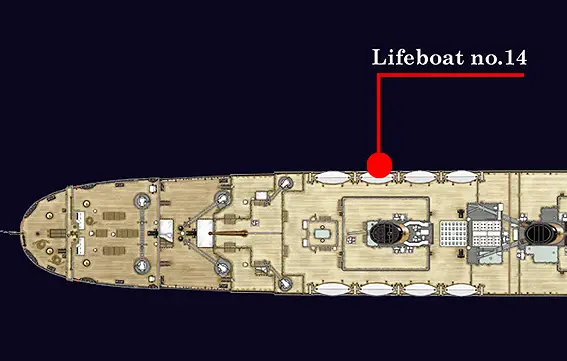
1.25am Lifeboat 14
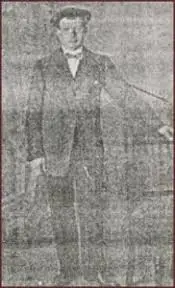
Able Seaman, John Poingdestre
testified Wilde "did not go with
no.14."
There are two witnesses that describe Wilde at lifeboat 14, the lifeboat that Fifth officer Lowe would ultimately take charge of.
27-year old Able Seaman, John Poingdestre testified at the British Inquiry about " Mr. Wilde, the Chief Officer" at lifeboat no.14 and that "The boat was filled with women and children also...about 40" but that the "officer" Wilde "did not go with no.14." (British Inquiry)
33-year-old Able Seaman Joseph Scarrott was rescued aboard lifeboat 14 and also testified at the British Inquiry about Wilde being there:
Directly I got to my boat [no.14] I jumped in, saw the plug in, and saw my dropping ladder was ready to be worked at a moment’s notice; and then Mr. Wilde, the Chief Officer, came along and said, “All right; take the women and children,” and we started taking the women and children. There would be 20 women got into the boat, I should say, when some men tried to rush the boats, foreigners they were, because they could not understand the order which I gave them, and I had to use a bit of persuasion... It seemed no sooner the order came along my side of the deck from Mr. Wilde - I heard him personally give that order - we had just started to get people into the lifeboat. We heard that before he got abreast of our boat; we heard it further along the deck, and I continued getting the women in, and when Mr. Wilde came along he gave the order again and assisted me to get the women into the boat. (British Inquiry)
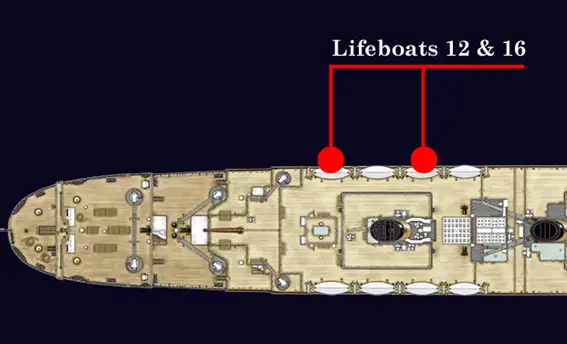
1.30am Lifeboats no.12 & 16
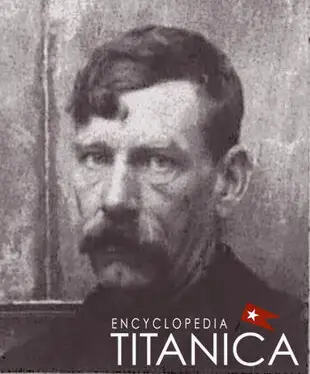
AB Frederick Clench said Wilde told him to "Jump
into that boat" (Image dated 1919, Encyclopedia
Titanica)
33-year-old Able Seaman Frederick Charles Clench testified at the Senate Inquiry that Wilde was at lifeboats 12, 14 and 16, but in particular no.12 and was working with Lightoller.
"I got the three boats out, and we lowered them down level with the boat deck. Then I assisted Mr. Lightoller… The second officer. Him and me stood on the gunwale of the boat helping load the women and children in. The chief officer was passing them along to us, and we filled the three boats like that….Me and Mr. Lightoller and the chief officer passed them in as we stood on the gunwale; in all three of the boats, that was. " (Senate Inquiry)
At number 12 Clench was ordered in: "When I got back to No. 12 again, the chief officer happened to come along, and he said, "How many men have you in this boat?" There was one man in the boat, one sailor, and I said, "Only one, sir." He looked up, and me being the only sailor there, he said, "Jump into that boat," he said, "and make the complement" - that was two seamen…. That was the boat I went away in."(Senate Inquiry)
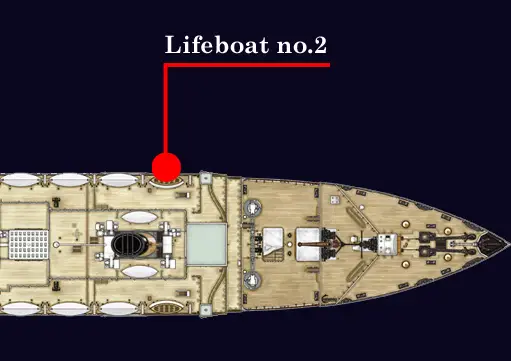
1.45am Lifeboat no.2
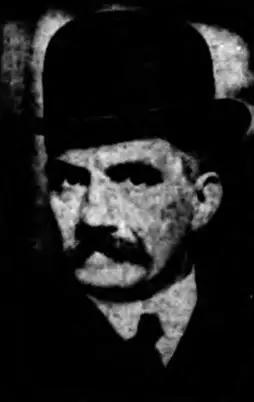
Steward James Johnston remembers Wilde
putting women and children into lifeboat no.2
Wilde was in charge of organising lifeboat no.2 the emergency cutter on the port side closest to the bridge.
Steward James Johnston, who was saved in lifeboat no.2, remembers:
I think Mr. Wilde asked, “What boat do you belong to” I said, “No. 2.” I am sure he had the list because he said, “That is right.” He said, “Can you pull” I said, “Certainly.” He said, “Stand by the falls.”... There was no one else then. Then the women and children got into it.. The chief officer [put them in]… they could walk right into it because there were either gratings or something, you had only to step half-a-foot on to the ledge and into the boat." (British Inquiry)
Fourth Officer Boxhall was put in charge of no.2 and also remembers Wilde there:
"The chief officer got that boat ready, and it was just ready to lower when the captain told me to get in her; that is, they had just started to lower when the captain told me to get in her... I think they were either just starting to lower or I had heard them sing out, "Lower away" when the captain told me to get in the boat. I did not load it. The chief officer loaded it and superintended the lowering... The captain was standing by this emergency boat. (US Inquiry)
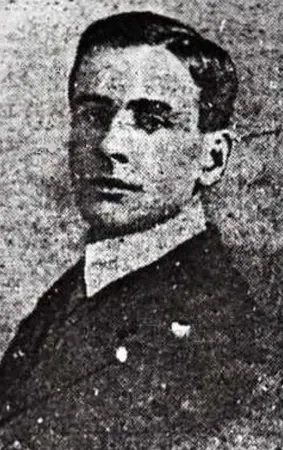
Boxhall states "the chief officer got that boat
ready"..."Mr. Wilde was superintending
the filling."
Senator Smith asked Boxhall about who was in charge on the port side, and also uses the term "superintended" as did Lightoller:
Mr. BOXHALL. I think most of the time that I saw Mr. Lightoller he was working on that side, but in the latter part I did not see him.
Senator SMITH. Do you know whether he had charge of that side in loading the lifeboats?
Mr. BOXHALL. Well, I do not know that he had charge when the chief officer was there; the chief officer, I mean, who was there when my boat was sent away.
Senator SMITH. Do you refer to the captain when you say the chief officer?
Mr. BOXHALL. No; I refer to the chief officer, Mr. Wilde.
Senator SMITH. The captain was there also?
Mr. BOXHALL. Yes; but Mr. Wilde superintended the loading of the boats.
Senator SMITH. Mr. Wilde superintended lowering the boats on the port side?
Mr. BOXHALL. I do not say the boats on the port side; I say he superintended the boat I was on. (US Inquiry)
At the British Inquiry Boxhall repeated the phrase:-"Mr. Wilde, or, I presume, Mr. Wilde was superintending the filling. The order was given to lower away when I was told to go in it and the boat was full; they had started the tackles when I got in… Port No. 2." (British Inquiry)
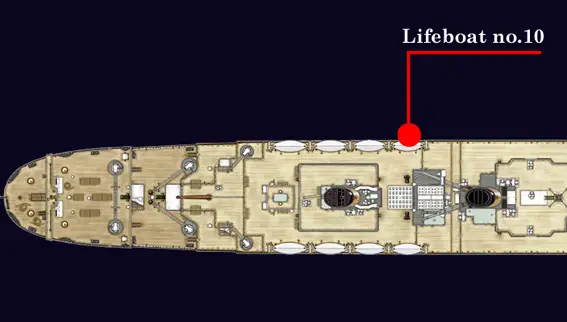
1:50am Lifeboat no.10
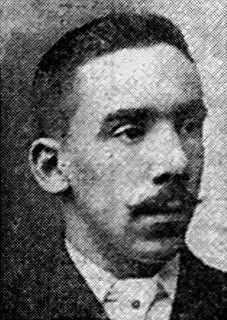
Chief baker, Charles Joughin, said
that "Mr. Wilde shouted out for
the stewards to keep the people back"
at lifeboat no.10.
33-year-old chief baker, Charles Joughin testified at the British Inquiry that Wilde was at lifeboat no.10, which was Joughin's assigned boat. Joughlin was a transferee from the Olympic, and presumably would have had the opportunity to acquaint himself with Wilde during department inspections. He described a large number of passengers gathered with Wilde conducting affairs, shouting at the stewards to keep the men back.
He describes it as "everything orderly. The Chief Officer was there... Mr. Wilde... They were getting the boat ready for getting the passengers in, and Mr. Wilde shouted out for the stewards to keep the people back, to keep the men back, but there was no necessity for it. The men kept back themselves, and we made a line and passed the ladies and children through." The line was made up of "stewards mostly - stewards and seamen; they were all together." (British Inquiry)
When the boat was full Wilde then picked out the men to take charge of it: "He said 'I want oarsmen.'... He picked out two sailors and a steward." (British Inquiry)
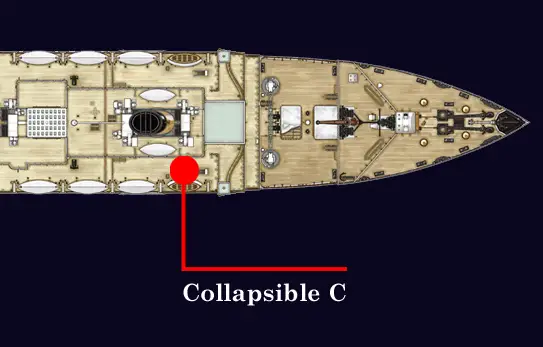
2am: Collapsible C & Ismay
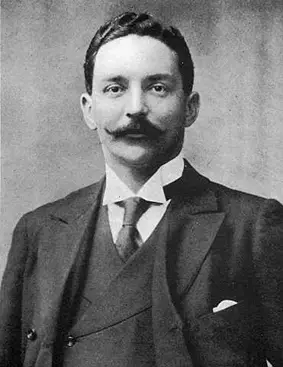
Ismay testified that Wilde was "the officer who
was in charge" of collapsible C
White Star Line managing director, Bruce Ismay, was an occupant of collapsible C, launched on the starboard side, forward at around 2am. His departure has been the subject of much criticism. According to at least three witnesses -one of whom is Ismay himself - it was Chief Officer Wilde who was in charge.
While Ismay was being questioned, he described the event in the following, noting that Wilde was "in charge of the boat":
Senator NEWLANDS. Mr. Ismay, did you have anything to do with the selection of the men who accompanied you in the last boat?
Mr. ISMAY. No, sir.
Senator NEWLANDS. How were they designated?
Mr. ISMAY. I presume by the officer who was in charge of the boat.
Senator NEWLANDS. Who was that?
Mr. ISMAY. Mr. Wilde.
Senator NEWLANDS. And he was what officer?
Mr. ISMAY. Chief officer.
Senator NEWLANDS. Was that done by lot or by selection?
Mr. ISMAY. I think these men were allotted certain posts.
Senator NEWLANDS. Indiscriminately?
Mr. ISMAY. No; I fancy at the time they had what they called, I think, the boat's crew list. That is all arranged beforehand. (US Inquiry)

Second Officer Lightoller described Wilde as "a pretty
big, powerful chap, and he was a man that would not
argue very long" and that he "simply bundled him
[Ismay] into the boat."
Second Officer Lightoller provided further details:
The chief officer also loaded some of the boats on the port side. I may also say, in regard to the testimony in regard to Mr. Ismay, although I can not vouch for the source, yet it was given to me from a source such that I have every reason to believe its truth... On the Carpathia... Before she arrived in New York... It is that Chief Officer Wilde was at the starboard collapsible boat in which Mr. Ismay went away, and that he told Mr. Ismay, "There are no more women on board the ship." Wilde was a pretty big, powerful chap, and he was a man that would not argue very long. Mr. Ismay was right there. Naturally he was there close to the boat, because he was working at the boats and he had been working at the collapsible boat, and that is why he was there, and Mr. Wilde, who was near him, simply bundled him into the boat. (US Inquiry)
It is curious to note Lightoller describe Wilde as "a pretty big, powerful chap, and he was a man that would not argue very long. " Notably he also uses the verb "bundle" to imply that Wilde forced Ismay into the boat. However there seems to be no supporting testimony of this. In Frances Wilson's "How to Survive the Titanic Or The Sinking of J. Bruce Ismay" it is noted that "Ismay on the other hand, said it was not true, that the decision to board a lifeboat had been his alone. There was a transparent, seemingly deliberate, feebleness to Lightoller's defences of his employer." Senator Smith questioned his testimony as Lightoller had not said it before. Lightoller replied: "No; but I believe it is true, I forget the source. I am sorry I have forgotten it." (US Inquiry)
Quartermaster George Rowe, who was rescued aboard collapsible C, confirms both Ismay and Lightoller's story to some extent - placing them there.
I took them [detonators] to the forebridge and turned them over to the fourth officer. I assisted the officer to fire them, and was firing the distress signals until about five and twenty minutes after 1. At that time they were getting out the starboard collapsible boats. The chief officer, Wilde, wanted a sailor. I asked Capt. Smith if I should fire any more, and he said "No; get into that boat." I went to the boat. Women and children were being passed in. I assisted six, three women and three children. The order was then given to lower the boat. The chief officer wanted to know if there were more women and children. There were none in the vicinity. Two gentlemen passengers got in; the boat was then lowered. (US Inquiry)
Rowe specifically named Wilde and Ismay, stating: "When Chief Officer Wilde asked if there was any more women and children there was no reply. So Mr. Ismay came aboard the boat." (US Inquiry)
Rowe said regarding there being no more women and children that he "could not see; but there were none forthcoming." Chief Officer Wilde did not say anything to Ismay:
Senator BURTON. Did you hear anyone ask them to get in?
Mr. ROWE. No, sir.
Senator BURTON. How were you occupied at the time they got in?
Mr. ROWE. I was occupied in attending the afterfall, sir.
Senator BURTON. Were you watching Chief Officer Wilde?
Mr. ROWE. Yes, sir.
Senator BURTON. Did you see him speak to them?
Mr. ROWE. No, sir.
Senator BURTON. If he had spoken to them would you have known it?
Mr. ROWE. I think so, because they got in the afterpart of the boat.
Senator BURTON. And you were in the afterpart of the boat?
Mr. ROWE. I was in the afterpart; yes. (US Inquiry)
Rowe was also questioned at the British Inquiry and stated: "The boat was partially full when I got into it; I had 53 women and 3 children in the stern. Chief Officer Wilde was asking for more women. There were none forthcoming, and two gentlemen got in… One was Mr. Ismay." (British Inquiry)
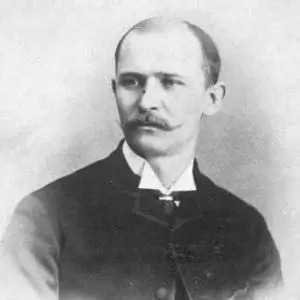
August Weikman, Titanic's barber testified under
oath that Ismay was ordered in collapsible C
by Chief Officer Wilde. (Image: nypost.com)
Lightoller's story is partly supported by the later publication of "The Ismay Line" by Wilton J.Oldham, published in 1961. which included the following:
"Unfortunately, apart from the official inquiries, very few people know the exact circumstances in which Bruce Ismay left the Titanic, as afterwards, rightly or wrongly his wife took the attitude that it was best forgotten, that it was bad for him to talk about it and she would never allow the subject to be discussed. There was one occasion, however, when he began to talk to his sister-in-law about his escape. He told her that one of the officers had urged him to get into the boat. There were no other passengers near, the boat was actually being lowered away and the officer had told him that he must go, as his captain would need his evidence at the inquiry which was bound to follow. That officer was Chief Officer Wilde who lost his life that night, and whose evidence if he had lived would have been of great value to Ismay. Bruce Ismay did not tell this story at the inquiries, however. Possibly he felt it would sound as though he were trying to make excuses for his escape. This story is borne out by the affidavit of Weikmann, the barber in which he says he heard Chief Officer Wilde order Mr. Ismay to get in." ("The Ismay Line" by Wilton J.Oldham, 1961.)
August Weikman, Titanic's barber who escaped aboard collapsible A had indeed given an affidavit at the United States Senate Inquiry (Day 15, 24 April 1912) in which he says he heard Chief Officer Wilde 'order' Mr. Ismay to get in: "I saw Mr. Ismay helping to load the boats... he got in along with Mr. Carter, because there were no women in the vicinity of the boat. This boat was the last to leave, to the best of my knowledge. He was ordered into the boat by the officer in charge. I think that Mr. Ismay was justified in getting in that boat at that time." (US Inquiry)
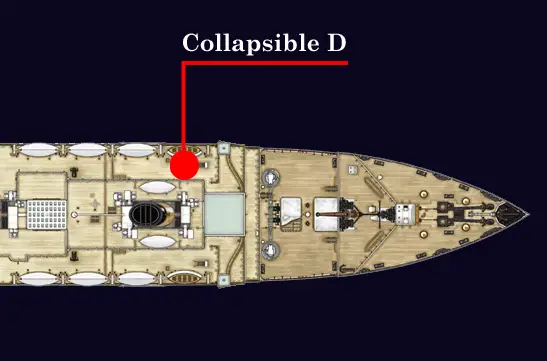
2.05am Collapsible D
The final lifeboat we can place Wilde at is collapsible D, back on the port side. According to Second Officer Ligthtoller, Wilde was there and also ordered him to take charge of it.
Lightoller first mentioned Wilde's presence during the British Inquiry: "The port collapsible boat underneath the emergency davits... The tackles were already rounded up when I got on the boat deck; we lifted the gunwale of the boat, which opens it up, hooked on the tackles, put it over the side; Mr. Wilde was there too at this time." (British Inquiry)

Second Officer Lightoller replied “Not damn
likely” to Wilde's order at collapsible D:
“You go with her, Lightoller.”
Lightoller later added further detail in his 1935 book. Although he indicated this happened at no.2, it most likely happened at the collapsible, based on the evidence of others at lifeboat no.2 (who do not place Lightoller there) and Lightoller's own testimony. Collapsible D would also have been loaded into the davits used by lifeboat no.2 and could explain the confusion:
"I stood partly in the boat, owing to the difficulty of getting the womenfolk over a high bulwark rail just here. As we were ready for lowering the Chief came over to my side of the deck and, seeing me in the boat and no seaman available said, “You go with her, Lightoller.”
Praises be, I had just sufficient sense to say, “Not damn likely,” and jump back on board; not with any idea of self-imposed martyrdom—far from it—it was just pure impulse of the moment, and an impulse for which I was to thank my lucky stars a thousand times over, in the days to come. I had taken my chance and gone down with the rest, consequently I didn’t have to take any old back-chat from anyone." (Charles Lightoller, Titanic and Other Ships, 1935)
SUMMARY:
From the above list we can confidently place Wilde at many lifeboat locations and actively giving commands and orders. Lightoller described Wilde's overall activities at the Senate Inquiry:
I had not thought that I put out half because I am under the impression that the chief officer put out a couple of the after ones on my deck, as well as supervising. He evidently found that he had the time, and put out a couple of these boats, and he also lowered the emergency boat; so I, think it is 3 he put out, out of 10 on that side. That left me 7. I think that is about what I put out; 7... I think the chief officer, under his direct supervision, lowered a boat from the after end. Of course I can not be absolutely certain. (US Inquiry)
Jemma Hyder and Inger Sheil also provide a summary of this action:
Once the loading and lowering of boats was underway, testimony places him predominantly on the portside boats, specifically at No.s 8, 10 and the aftermost 12-16. Crewmen John "Jack" Poingdestre and Joseph Scarrott specifically noted him in active charge at least of the initial loading of No. 14. It was also Wilde who, according to Lightoller, suggested accessing the ship’s armaments and distributing the Webley revolvers to the senior deck officers.
Fourth Officer Boxhall remembered that Wilde was in charge of the deck during the loading of #2, and the inquiries also established that he crossed to starboard to work at collapsible C (where, controversially, Lightoller would claim he later learned Wilde bundled the White Star Line chairman J Bruce Ismay into a lifeboat). After this, we lose sight of Wilde in the confusion of the Titanic’s final minutes.
("On Watch" - Nautical-papers.com, 2002 by Jemma Hyder and Inger Sheil)